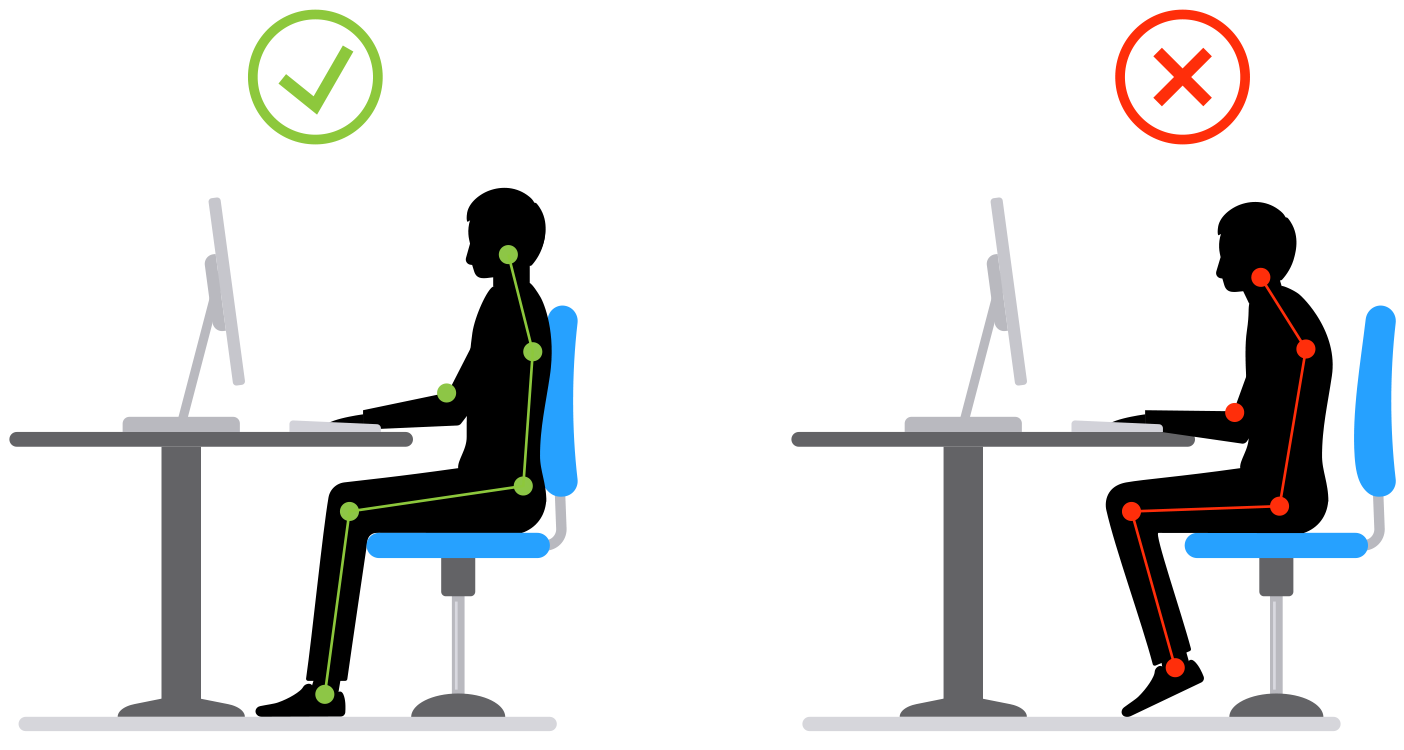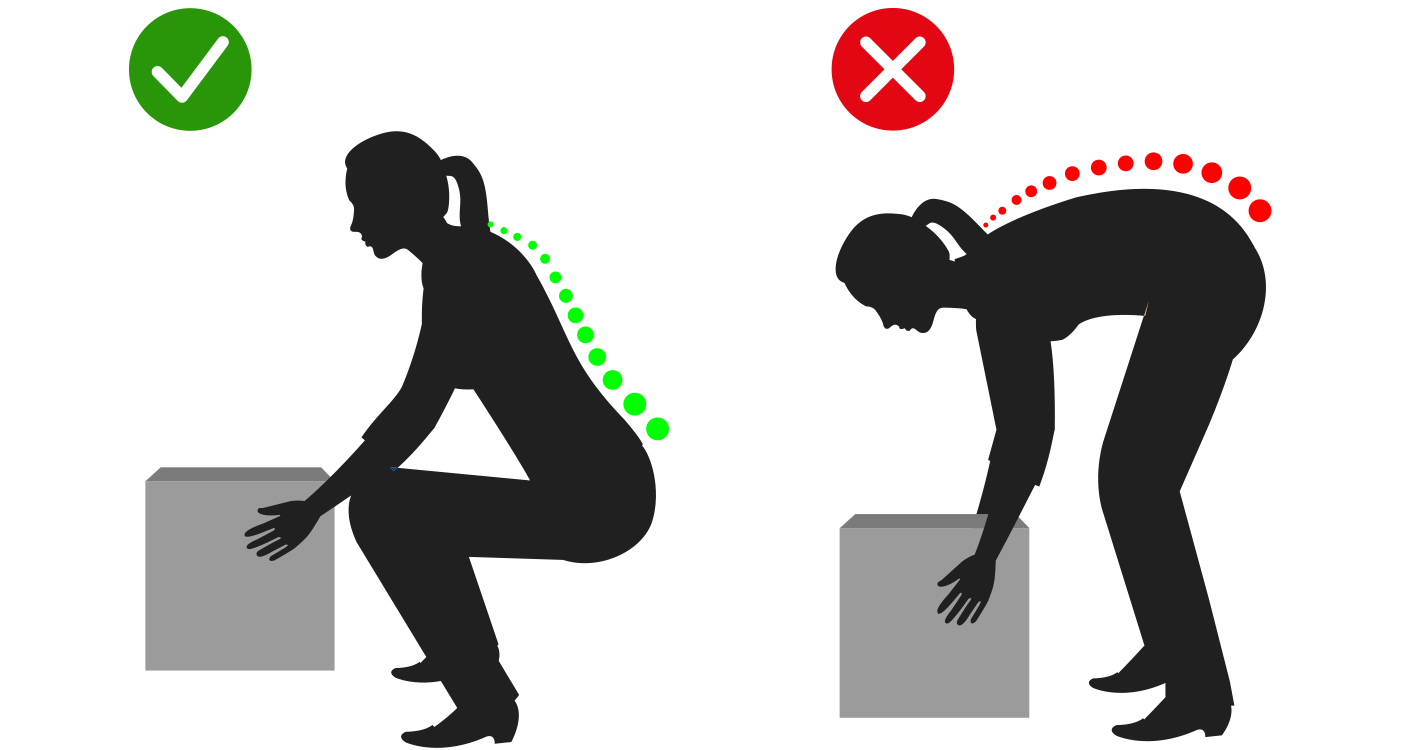|
|
|  | Ergonomics is the study of human efficiency in their working environment and involves designing and arranging workspaces so people work efficiently and safely.
Regardless of your work at Northwestern, whether sitting at a desk on campus, working from home, using hand tools, or lifting items, ergonomics plays an important role in your health and productivity. Poor posture, improper tool use, and unsafe lifting methods can lead to discomfort and potential injuries with prolonged exposure.
It’s important to learn about the risk factors and associated good ergonomic work practices to minimize the risk of injury. These may be as simple as chair adjustments, following proper lifting techniques, or utilizing the appropriate equipment. |
|
| Risk factorsBelow are some examples of common ergonomic risk factors that, if performed over long periods of time, can result in musculoskeletal disorders (MSDs) - cumulative and chronic injuries of the soft tissue muscles, tendons, ligaments, nerves, joints, and blood vessels. Activities with multiple risk factors will increase the likelihood of these injuries.
- Repetition from doing the same task repeatedly, using the same muscles over and over (e.g., computer work)
- High force from using extra muscle power during activities such as heavy lifting or pushing items
- Awkward postures when your body is bent, twisted, extended, or flexed rather than in a neutral position (e.g., overhead work)
- Vibration that enters the body from power tools or equipment, such as hammer drills
Symptoms
Contact your supervisor and seek medical treatment when necessary if you are experiencing any symptoms of MSDs, which include pain, weakness, stiffness, sensitivity, swelling, tingling, or burning in the affected area. |
|
| Did you know?Here at Northwestern, ergonomic-related injuries such as sprains and strains accounted for the majority (37%) of all injuries recorded in 2023. Almost half of these injuries involved the hands or wrists, and nearly all cases resulted in lost or restricted work days. |
|
| Office ergonomicsWhether working on campus or from home, follow these tips to work comfortably with a neutral posture and avoid common issues like fatigue and neck, back, and wrist pain.
- Ensure your chair has lumbar support and adjust the height so your elbows are bent at 90° and your feet are flat on the floor (use a footrest if necessary)
- Position desktop computer monitors in front of you at about an arm's length away, with the top of the monitor at or just below eye level
- Laptop users should use a kickstand to raise the monitor to the correct height and then utilize an external keyboard and mouse
- Ensure the keyboard and mouse are positioned at the elbow level and within reach
- Consider a sit-stand workstation to integrate movement into the workday
- Alternate tasks and postures throughout the day and follow the 20-20-20 rule: Every 20 minutes, stand for 20 seconds, and look 20 feet away from your screen
|
|
|
| Safe material handling tipsUse equipment (e.g., dollies, carts, and hoists) when feasible and always ask for help with heavy or awkwardly shaped items. If you are unsure if you can safely perform a task, STOP and contact your supervisor. Follow these proper lifting techniques to keep yourself safe:
- Ensure loads are light enough to carry safely
- Stretch your body before tasks that require physical exertion
- Identify any necessary personal protective equipment (PPE), such as gloves for hand protection
- Plan the lift by ensuring your path of travel is clear of obstructions and hazards
- Get as close to the load as possible and avoid overreaching
- Bend at your knees, not your waist, and keep your back straight
- Use both hands and lift with your legs using a smooth motion
- Keep the load close to your body with an upright back
- Set down the load in the same way you picked it up but in the reverse order
|
|
|
| TrainingOffice and industrial ergonomics online safety training courses are available in myHR Learn. If this biennial training is required by your school or unit, please check your learning dashboard to ensure you are up-to-date. |
|
|
|
| Do you want to learn more?
- Review the Northwestern Ergonomics program.
- Contact the Environmental Health and Safety (EHS) team at ehs@northwestern.edu.
- View past Spotlight on Safety discussions here.
|
|
|
|
|




